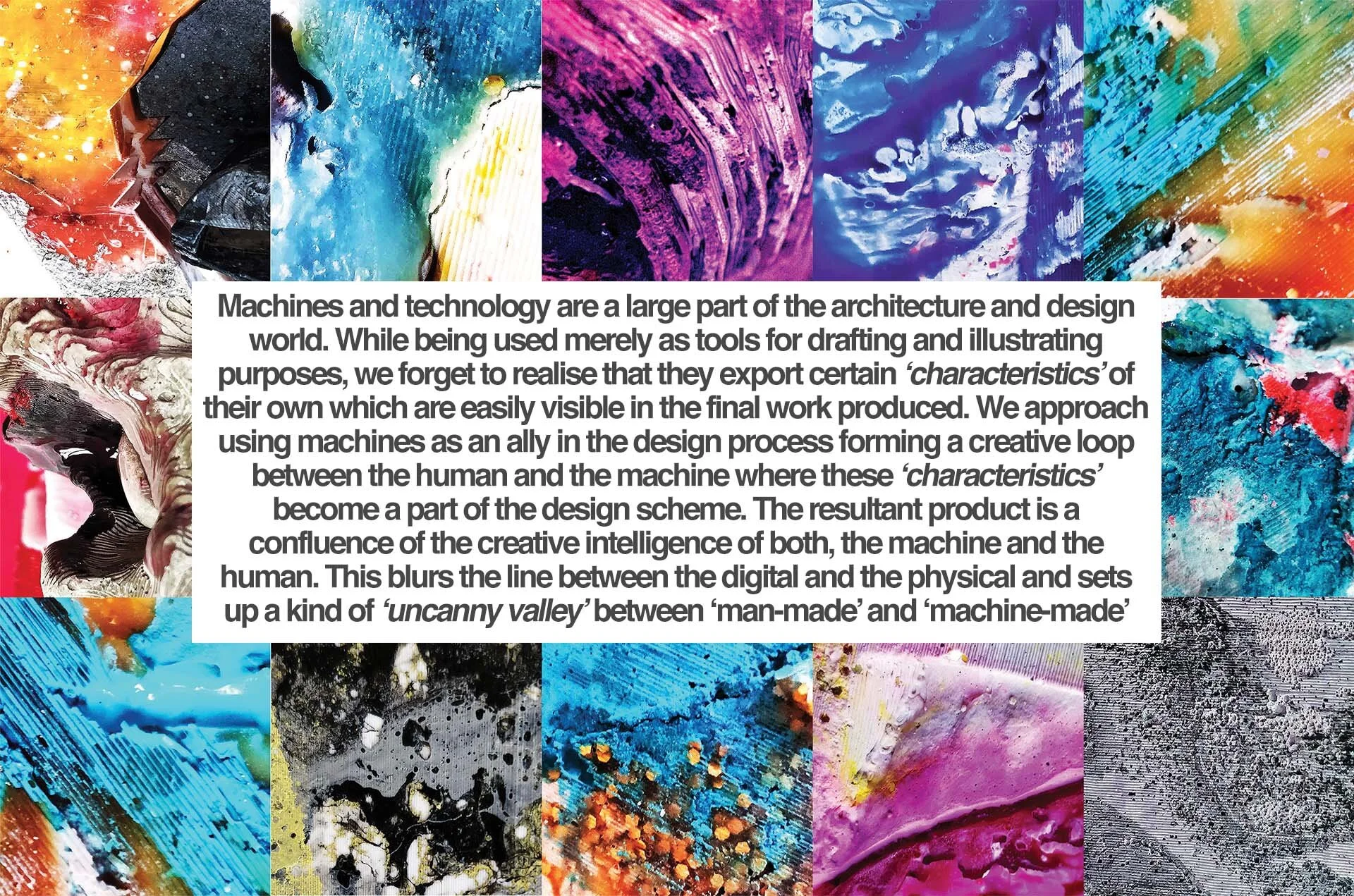ReWork : WeWork
Scope of Work: Research, Architecture, Interior
Typology: Office, Commercial, Speculative
Location: New York City, USA
Year: 2019
Status: Speculative
Size: Scalable
Design Team: Kasturi Wagh + Vineet Hingorani
The project calls for the re-design of a vertical circulation core at WeWork’s New York HQ. We look at staircases as a tool to achieve above and beyond the function of vertical circulation. We look at staircases as a tool for communication, a prototypical vertical public social space of varying volumes for the inhabitants, and an organic alien-esque creature born out of natural processes that command a dialogue on the anthropocene epoch.
Earth has changed tremendously over the past two centuries since the age of industrialization as humans have mined, cultivated, trawled, bleached and emitted their way forward with new technologies and higher populations. New materials, such as plastic, concrete and aluminum have spread across oceans and land. The impact of the human species is so severe that the current geological time period has been declare by geologists as the Anthropocene. Therefore, it is necessary to introduce a new dialogue with the goal of achieving constructive engagement between man, nature and technology with architecture and design as a medium - a concept that reduces pressure on the environment and increases our ability to foresee.
Plastiglomerate, popularly recognised as the first material of the anthropocene epoch, is a strange and intriguing product of the systematic pollution of water bodies. It is formed when plastic and other trash melts and fuses with organic materials such as sand, shells, wood, stone fragments, corals, etc. due to physical geological processes and oceanic currents resulting in the formation of a plastic-rock hybrid.
Machines and technology are a large part of the architecture and design world. While being used merely as tools for drafting or illustrating purposes, we forget to realise that they export certain characteristics of their own which are easily visible in the final work produced. We approach using machines as an ally in the design process forming a creative loop between the human and the machine where these characteristics become a part of the design scheme. We make a sincere effort to learn from nature, experiment and apply the learning to machine and digital processes in order to create a product that blurs the boundary between the ‘natural’, the ‘man-made’ and the ‘machine-made’. Repeated cycles of digital modelling, physical modelling, 3D printing, physical casting and photogrammetry sets up a feedback loop creating a kind of ‘uncanny valley’ where the characteristics of these three sections co-exist and result in a product with feelings of eeriness and estrangement.
Creating an ‘uncanny valley’ becomes a vital design approach to produce aesthetically invigorating textures that leave a feeling of animosity and oddness but are yet appealing. The resultant product has qualities oscillating between notions of realism and fictionalism.
An office space like WeWork produces a substantial amount of plastic and paper waste every day. We utilise this paper and plastic trash along with concrete rubble from demolition sites in the city to create an urban version of plastiglomerate. Hence, plastiglomerate, being part natural, part synthetic, as a building material falls perfectly within the themes of estrangement, the ‘uncanny valley’ and the anthropocene and sets up a strong framework for the project to develop further upon.

























